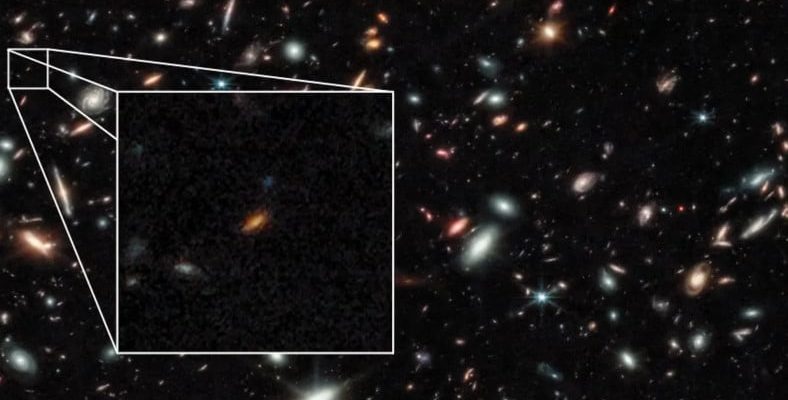NASA’s James Webb Space Telescope has managed to detect the second and fourth most distant galaxies discovered to date. These galaxies are located 33 billion light years away.
While humanity’s efforts to explore space continue, NASA’s James Webb Space Telescope continues to offer us new discoveries. The last of these discoveries were two galaxies 33 billion light years away. These galaxies, two of the most distant ever discovered, are so far away that they may have vanished thousands of years before we can see them.
Two of the most distant galaxies
Astronomers at Penn State James WebbHe used his skills to detect celestial objects behind the Pandora star cluster, which is 3.5 billion light-years away from our planet. At the end of this study, the second and fourth farthest galaxies discovered to date were imaged. These galaxies are called “UNCOVER-z12” and “UNCOVER-z13”.
continues his studies at Penn State and JWST UNCOVER researcher in the team BingjieWangIn his statement, he emphasized the importance of discovering ancient galaxies. Wang, “We know so little about the early universe that the only way to learn about that period and test our theories about early galaxy formation and evolution is to use these very distant galaxies.” he said.
The appearance of these two galaxies is slightly different from other ancient galaxies. One of the galaxies looks like a shelled peanut, and the other looks like a shiny ball. The fact that early galaxies could have such different structures raises some questions. It is estimated that these galaxies emerged 330 million years after the first moments of the universe. Since then, the light coming from these galaxies has made a journey of 13.4 billion years. of galaxies 33 billion light years The reason for this distance is that the universe is also expanding. You can think of it as the chocolate chips on a rising cake moving away from each other as the cake rises.
RELATED NEWS
NASA Shared the “Most Colorful” Image of the Universe Ever
Researchers say that these two galaxies It contains very little metal and it shows that they are rapidly forming new stars. This is seen as a finding that supports the Big Bang theory.
Research, Astrophysical Journal LettersIt was published in .
